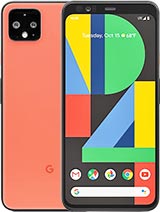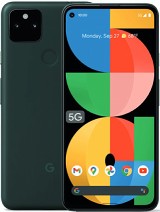Google Pixel 5 camera review: BETTER than an iPhone, BUT… By Tony & Chelsea Northrup
Google gave us the new Google Pixel 5, and we can finally share pictures, but it's raining, and you know what that's okay, because I'm a professional photographer and one of the reasons I love using a smartphone so much is that almost all of them are waterproofed, and this one is waterproof down to. I think below three meters like I'm, definitely not going to take it that far, and it's nice to know that I can just pull it out in the rain and not worrying about damaging it, and I'm pretty clumsy. I can even take it out on boats and not worry about dropping it. Let's go over the specs real quick. It is a 700 camera which is actually pretty cheap compared to the flagships from companies like apple. The new 12 pro max starts at 1100 bucks, and this is going to give you most of what that does.
Look. It works. Just fine can't do that with your six thousand dollar camera. Can you, of course it's got the standard 27 millimeter lenses, but for the first time in a Google Pixel phone, it's also got a super wide angle? 16 millimeter lenses, and that was a dealbreaker for us on the earlier pixels because I don't mind doing a panorama, but they never turn out quite right, and I love using super wide-angle lenses for smartphone photography where you tend to be up close. Unfortunately, they traded the telephoto lens for that super wide angle lens, and if I could only have two lenses yeah, I would pick the super wide and the normal lens, but I miss having that little of more telephoto reach.
Realistically, though, on the iPhones, their telephoto lens, at least for the 11 and earlier weren't, that much sharper than just cropping the standard, 27 millimeter lenses, and so that's what the focus at Google decided to do with the pixel. You can still zoom in further, but it's done through cropping unless you lose a little of resolution. But if you don't see a difference in sharpness, then it's all the same. Let's take a look at portraits taken with the Google Pixel 5 and the Apple iPhone 11 Pro max. At a glance the Google Pixel 5 photos looks better.
The skin tones are more natural than the iPhone's yellow tones and the lighting just seems more natural, the iPhone really over processes it. I also jumped to this bit of focal here, where the iPhone decided not to blur these flyaway but to heavily blur these flyaway and zoomed out. The Google Pixel 5 actually looks better as we start to zoom in you can see where it decided to stop blurring the background right here, and that is a bit unnatural as we look at this piece of the window frame, but you know what they both did: a pretty poor job of it and I guess portrait photographers are still going to need a real camera zooming in to look at the details. At a glance the Google looks sharper, but I think it's caused by just over sharpening, as we really look at the edges of these. You can see this sort of dark edge, glow that happens with artificial sharpening and the iPhone just doesn't have that same artificial.
Look. Let's look at a couple handheld night mode photos of the stars on the left. We have the iPhone, and you can see it shows far more stars because it renders an overall brighter image. As we look at the Google Pixel 5 images, it's darker, you can't see as many stars, but if you zoom in you can see it's a much cleaner image, whereas the iPhone introduces a ton of noise. Overall, I think the iPhone produces an image you'd be more likely to share.
After all, if you're taking pictures of the stars, that's probably what you want to show up in the picture by the way, I'm also using this as a weatherproofing test for my Sony, a7s3, the fanciest 3500 video camerae, you can buy. The super wide angle lens here are 18 megapixels, while the normal lens is 12 megapixels, those are both okay, they don't match the 100 megapixel Samsung s100 that we're going to be comparing it again soon, but then again those 100 megapixel pictures, weren't, even better than a standard 24 megapixel picture from a regular camera. My canon's 26 megapixels look better than the Samsung, because every real photographer knows the lens matters more than the megapixels I win again, and I don't need unnecessarily big files if I'm not getting more detail. So I'm okay with that, there is an advantage to the limited selfie camera, though they don't require a huge cutout at the top of the screen like say the iPhone does. Instead, you get a little hole punch for the camera, and that gives you more screen viewing space.
Realistically, though, I don't know how useful that is, because let me pull up my Squarespace website. As I look at this as I'm just browsing pages, you can see the whole top part of the screen is dedicated to just status and is mostly blank anyway. So what's even the point, the front-facing camera is only eight megapixels, and this is the quality that you can expect from it. When recording video, that's okay, it only has the one camera now, and it's actually not that wide. So I really have to stretch to reach my arm out full length.
I miss the wider angle, selfie camera that they used to have this camera advertises 4k 60 on the back cameras, but it's a little misleading the 4k 60 only applies to the 27 millimeter lens. It does not apply to the super wide angle lens. The super wide angle lens will do 4k, but only at 30 frames per second. The phone is also no longer able to unlock using just your face, but in 2020, maybe that's kind of okay, because I end up locking unlocking with a pin on my iPhone all the time anyway. Instead, what you get is a very cool fingerprint sensor on the back.
You know, like phones used to have- and I kind of wish they still did. It works better than face unlock for me, especially in 2020. I also want to mention the back of the camera is actually pretty amazing. It feels like really high quality paper, like a wedding, invite that you would receive and comment on saying these must have cost a lot. I've never felt a phone that feels quite like it and I love it.
It's so much better than the super slick backs that you get on most other modern smartphones that are always trying to slip out of your fingers. Video mode also includes some new stabilization features, so let's get a quick preview of how those work. This is the locked mode which acts like a tripod, and I'm just going to film my very wet Sony, a7s iii. Obviously this is handheld and oh, it looks pretty stable to me. Video also has an active stabilization mode for heavy movement and a panning mode for nice.
Cinematic pants, I'm always trying to do handheld pans because I hate using a tripod. So let's see how this pans- oh, I almost forgot to mention something, and it's kind of a huge bummer, and it's going to make all the android nerds super mad. But this has one big flaw that can't be overcome and that's that well, it's not an iPhone. It doesn't participate in the iOS infrastructure, and that means well, maybe technically I could get my Apple Watch to work with it, but it wouldn't work as well. My AirPods would work with it, but it wouldn't work as well.
It can't airdrop things to my friends or my Mac and if I participate in a group chat, then suddenly it's going to be a green text and the capabilities of the entire group chat will be lowered and everybody's going to be annoyed. It won't connect to my apple car play in my car because my car doesn't have android, auto and there's just a whole huge list of bummers that come along with switching away from an iPhone and that's why well so much of the world kind of has settled on iPhone, and it's not fair apple has locked us into an infrastructure and, frankly, I think it's monopolistic, and they should open it up, but they haven't, and here in the real world I actually care about the results, and it is a professional tool for me. So that's why we all use iOS. But nonetheless, if you are an android person, it's great to know about new cameras with amazing computational photography that can actually take better low light photos than a full-frame camera. We have a full detailed review coming.
So in the comments down below tell me exactly what you want us to test and what you want us to test it against, of course, we'll test it against the new iPhone 12, but we're also going to test it against the Samsung s20, the Sony, opera, the older, pixel and, well frankly, anything else. You want us to test it against, because I really do take smartphone photography seriously. That's why, in the latest edition of stunning digital photography, I rewrote it and I assumed that photographers would regularly be switching between real cameras and often shooting with a smartphone or drone. So now, even if you shoot with a smartphone, you can learn the basics of storytelling and composition and lighting and the things that will really make your photography better so be sure to check that photography book out. It's the number one photography book in the world, don't forget to subscribe and click the bell, so you're notified when we have that video out thanks a lot bye.
Source : Tony & Chelsea Northrup



























